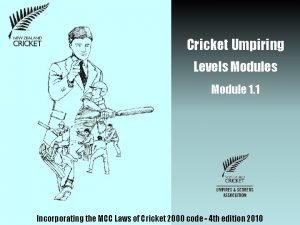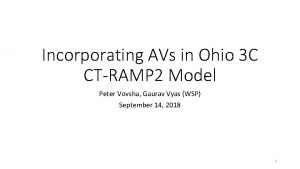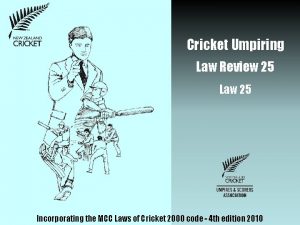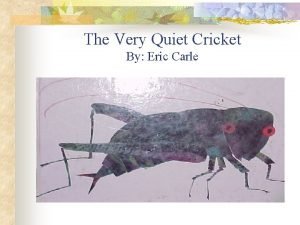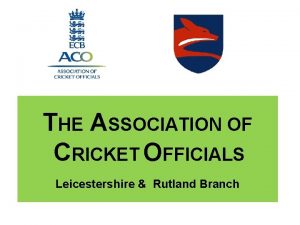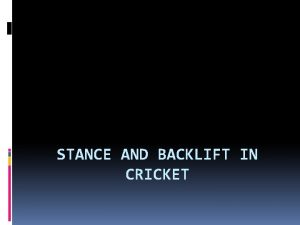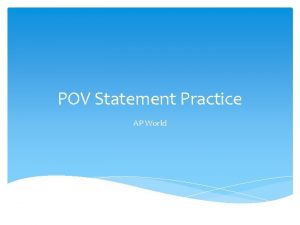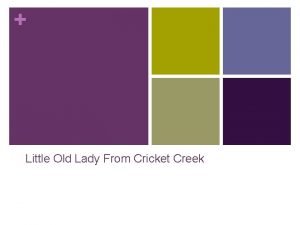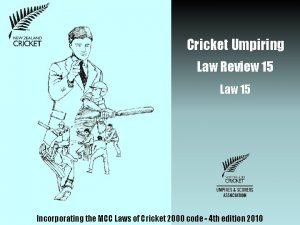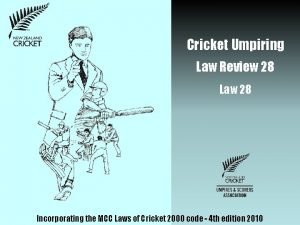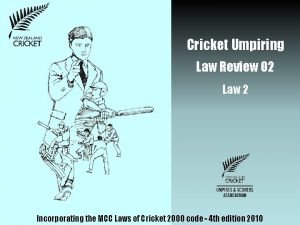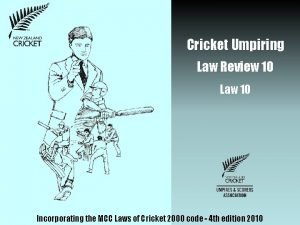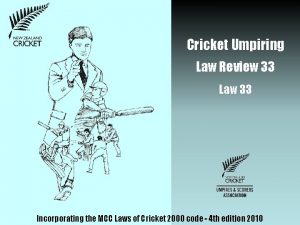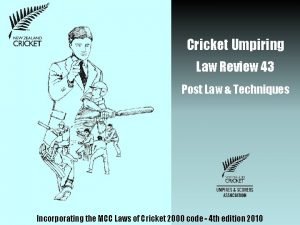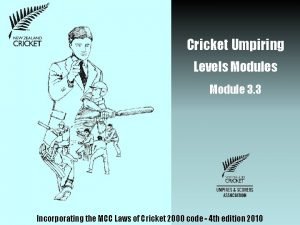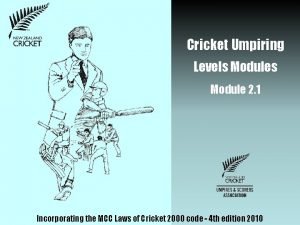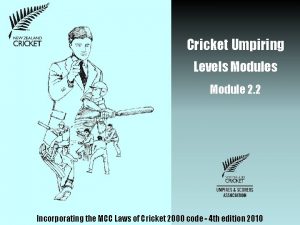Cricket Umpiring Law Review 09 Law 9 Incorporating












- Slides: 12

Cricket Umpiring Law Review 09 Law 9 Incorporating the MCC Laws of Cricket 2000 code - 4 th edition 2010

The creases The names given to the crease markings are of vital interest to players and umpires The actual creases are the edges of each marking closest to the umpire All creases must be painted in WHITE Popping crease Bowling crease 2 Return creases

The creases - measurements These markings are of vital interest to players and umpires All measurements are taken from an imaginary centre-line through the centre of the pitch and from the back edge of the Bowling crease 22 yards (20. 12 metres) from the other end The Popping crease is EXACTLY 4 feet (1. 32 metres) in front of the Bowling crease and no less than 12 feet (3. 66 metres) long The Bowling crease is EXACTLY 8 feet 8 inches (2. 64 metres) long The two Return creases must be no less than 8 feet (2. 44 metres) long

Remarking the creases The creases must be remarked whenever either umpire deems it necessary

The creases Law 9 refers to the dimensions and painting of the creases NZC requires the length of the Popping crease to be extended to 20 feet (6 metres) on either side of the imaginary centre-line 5

Limited-over matches To help additional lines must be painted on the pitch The inside edge of each line must be 17 inches (43. 2 cm) inside the Return crease THAT IS 35 inches (89 cm) from the imaginary centre-line 6 Umpires must ensure these lines are correct before the start of play

Making Wides easier to define WHITE lines must be painted between the Popping crease and the Bowling crease 89 cm from the imaginary centre-line This assists defining off-side Wides If the ball passes outside that off-side Wide-line. . . the umpire must call & signal WIDE If the ball goes past the striker on the leg -side without it making contact with him the umpire must call & signal 7 WIDE

Additional markings These markings should be painted only on-request If the pitch is not mowed to the correct width side marks may be used to indicate the true width of pitch

Additional markings These markings should be painted only on-request These marks show the beginning of the protected area The Protected area is reviewed in Law Review 42

Artificial pitches There are two types of artificial pitch In-ground permanent & Roll-up removable

Artificial pitches What happens if the Return creases are not painted? While the popping crease and the bowling crease will always be permanently painted, regulations or local custom should require either. . . when bowling, the bowler must have one foot, wholly on the pitch, or the bowler must have his front foot, wholly on the pitch In the absence of any such regulation, it is imperative that captains and umpires agree, before the toss what should apply Regulations may also include the type of footwear bowler’s must use, perhaps prohibiting sprigs Umpires must be familiar with all Regulations and local customs

These modules were written & produced for New Zealand Cricket by the New Zealand Cricket Umpires & Scorers Association 12 © 2010 NZC-NZCUSA
 Cricket umpiring signals
Cricket umpiring signals Incorporating the change
Incorporating the change Nn
Nn Nested quotations
Nested quotations Incorporating pronunciation
Incorporating pronunciation Incorporating in ohio
Incorporating in ohio Capital budgeting chapter
Capital budgeting chapter Law 25 of cricket
Law 25 of cricket The little cricket
The little cricket Leicestershire and rutland cricket
Leicestershire and rutland cricket Backlift in cricket
Backlift in cricket Ap world history pov statement
Ap world history pov statement Little old lady from cricket creek summary
Little old lady from cricket creek summary
